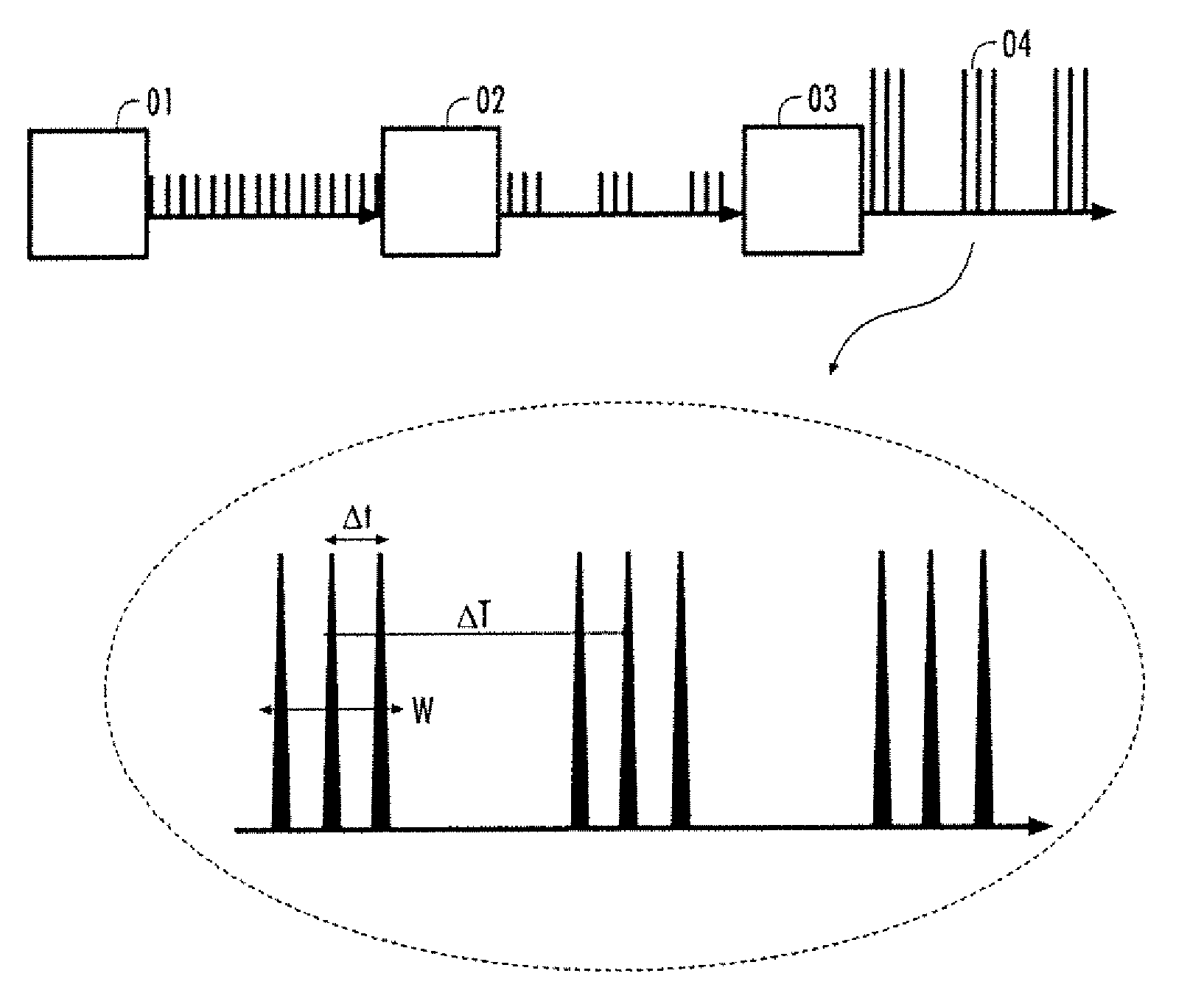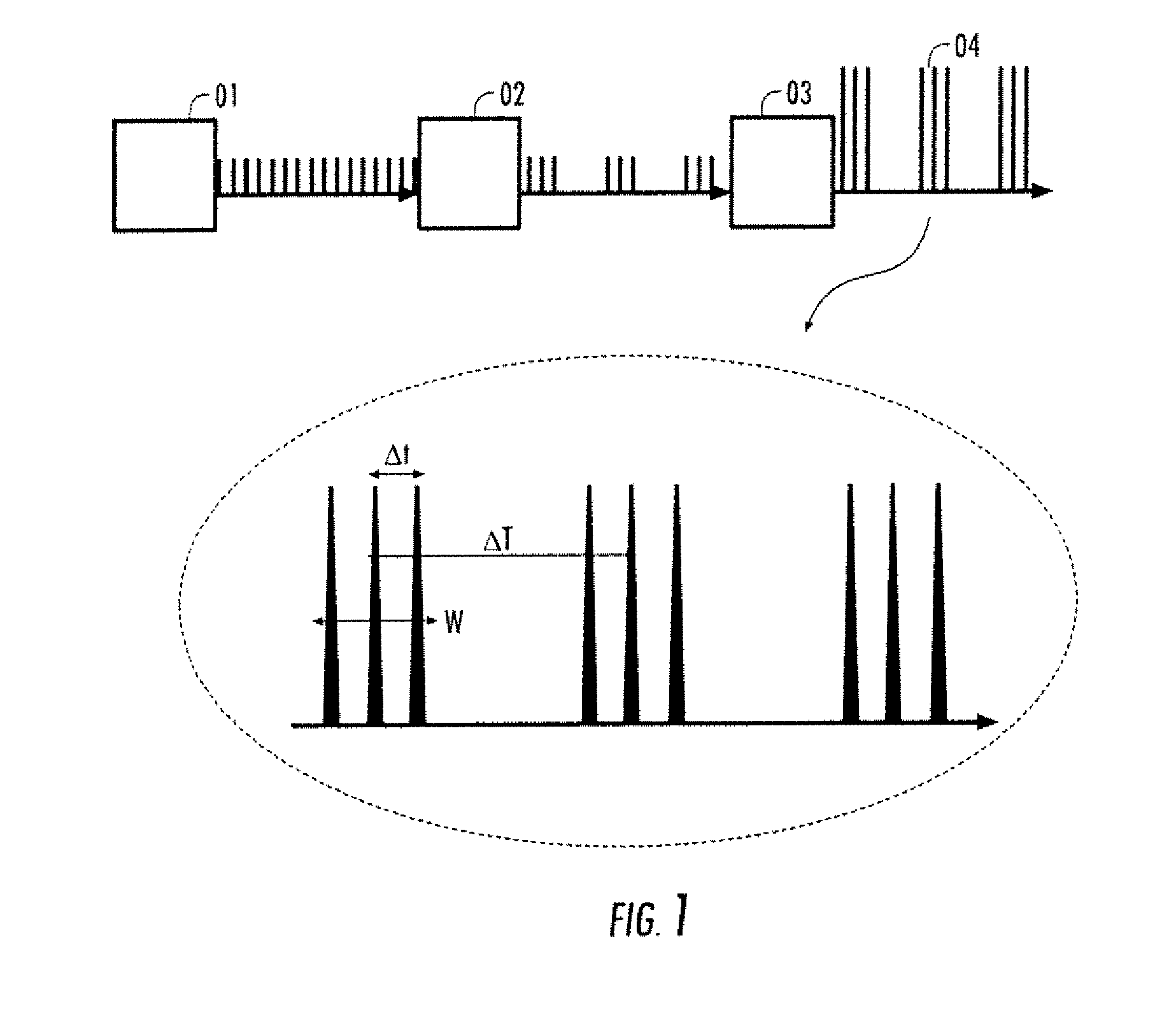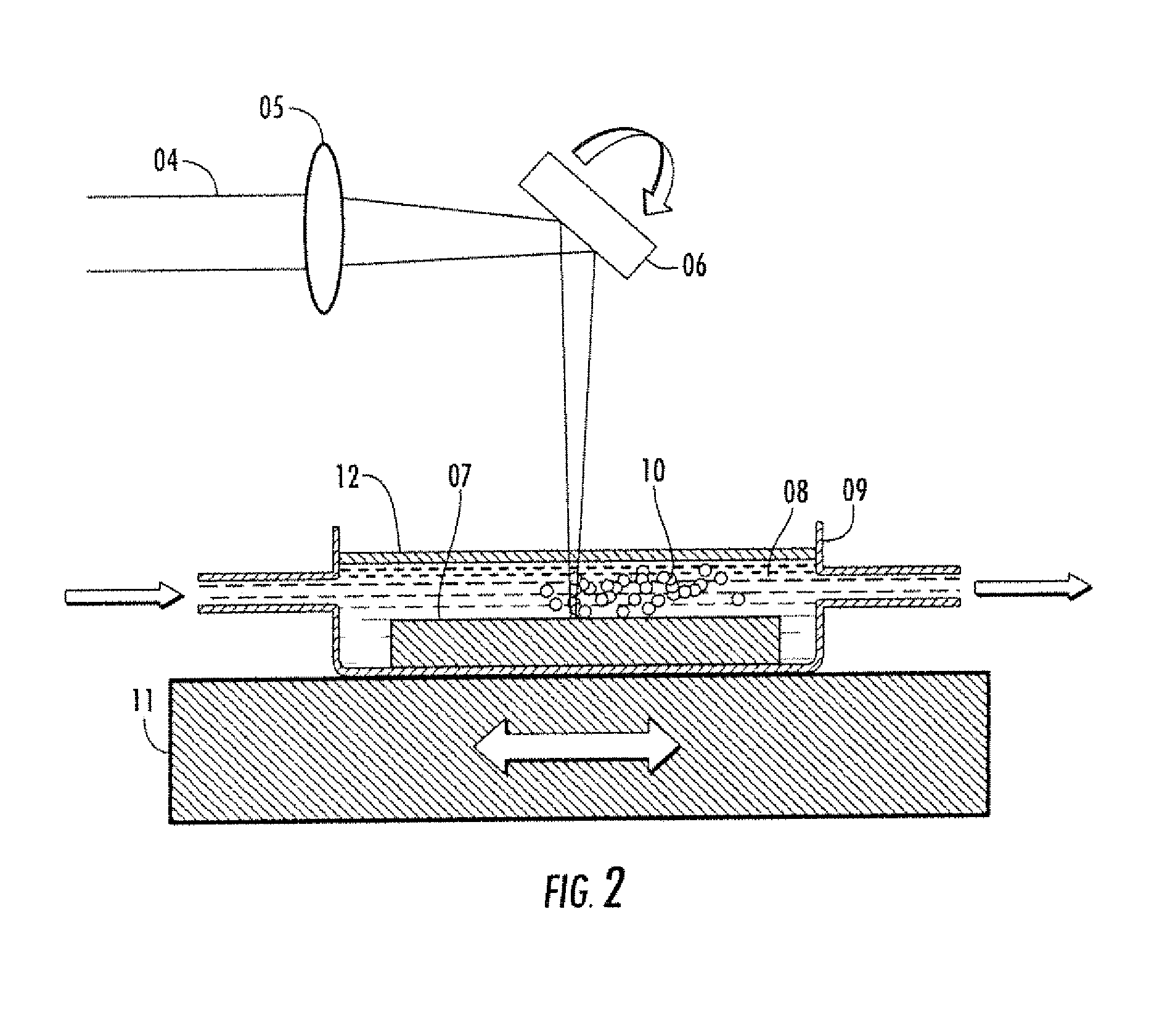Nanoparticle production in liquid with multiple-pulse ultrafast laser ablation
a laser ablation and nanoparticle technology, applied in the field of nanoparticle production, can solve the problems of reducing the sensitivity of sensors, complicating the identification of the subject chemical, and many surface control agents used in synthesis, so as to enhance the production rate of nanoparticles
- Summary
- Abstract
- Description
- Claims
- Application Information
AI Technical Summary
Benefits of technology
Problems solved by technology
Method used
Image
Examples
Embodiment Construction
[0019]FIG. 1 schematically illustrates a laser system design of an ultrafast multi-pulsed laser designed in accordance with the present invention where multiple pulses can be extracted and used to ablate a target material. A seed laser 1 generates a high repetition rate of from 10 to 1000 MHz, more preferably from 30 to 100 MHz pulse train with nanoJoules of pulse energy and a pulse duration of preferably 10 femtoseconds to 200 picoseconds, more preferably a pulse duration of 100 femtoseconds to 10 picoseconds, making it an ultrafast pulsed laser. In the current invention, the seed laser operates at a wavelength of 1 micrometer. Other wavelengths of from UV to near infrared can also be used without affecting the general principals of the current invention. The pulse separation time is preferably from 1 to 100 nanoseconds and more preferably from 10 to 30 nanoseconds. The seed laser pulse train is then passed through an optical gate 2 for pulse group selection. In at least one embodi...
PUM
| Property | Measurement | Unit |
|---|---|---|
| relaxation time | aaaaa | aaaaa |
| speed | aaaaa | aaaaa |
| particle size | aaaaa | aaaaa |
Abstract
Description
Claims
Application Information
 Login to View More
Login to View More - R&D
- Intellectual Property
- Life Sciences
- Materials
- Tech Scout
- Unparalleled Data Quality
- Higher Quality Content
- 60% Fewer Hallucinations
Browse by: Latest US Patents, China's latest patents, Technical Efficacy Thesaurus, Application Domain, Technology Topic, Popular Technical Reports.
© 2025 PatSnap. All rights reserved.Legal|Privacy policy|Modern Slavery Act Transparency Statement|Sitemap|About US| Contact US: help@patsnap.com



